One of the most rewarding things I get to do in my life is help horses who are in desperate situations. Many times what the owner is trying hasn’t been working for one reason or another and the horse is out of options. Sometimes helping these horses requires me to travel great distances from home. I have been all over the country helping all types of desperate horses. I feel very grateful to be involved in their care and see them get well.
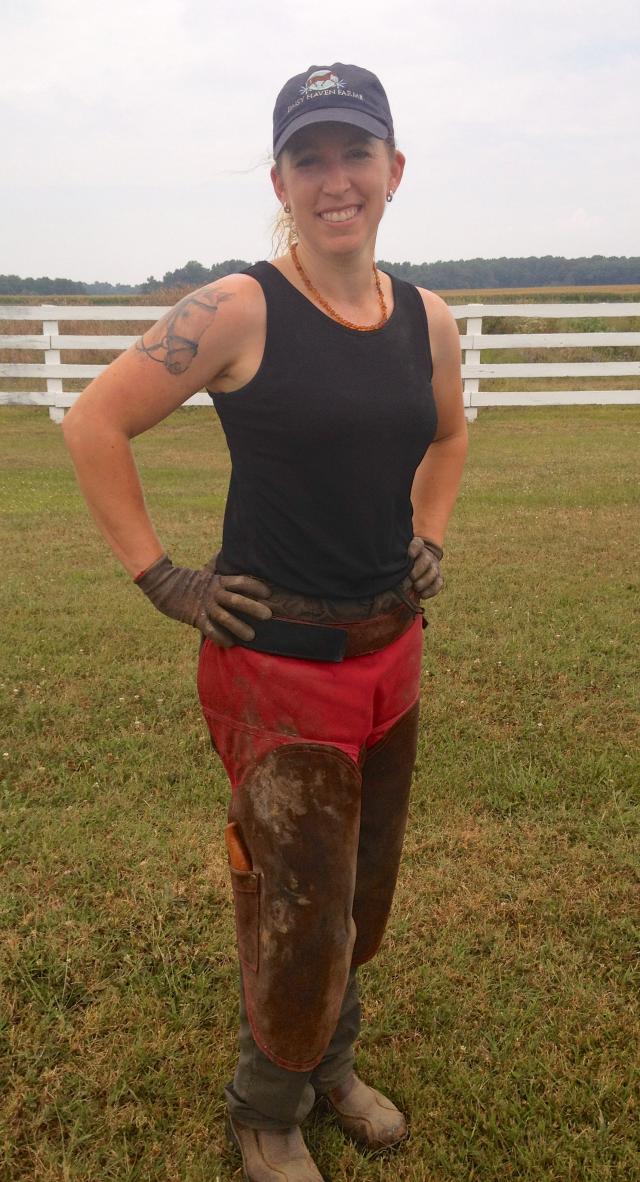
On my latest trip, I had the pleasure of working with two amazing veterinarians, Dr. Linnea Theisen and Dr. Emily Gilmette of Eastern Equine Associates in New Bern, North Carolina. I met Dr. Gilmette several years ago at the International Hoof Care Summit in Cincinnati, OH, and we have since consulted with each other on a variety of cases. When I got the call from these ladies and they asked me to come south, I knew the situation must be bad.
Here were the radiographs Dr. Theisen sent me of their initial evaluation of the horse:
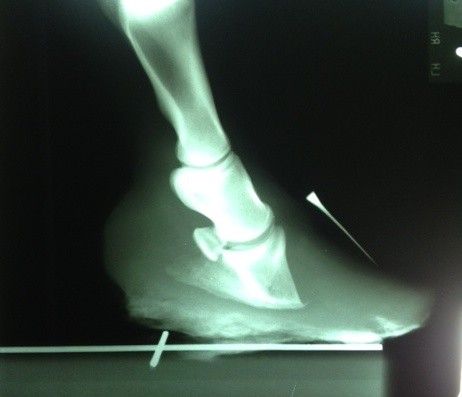
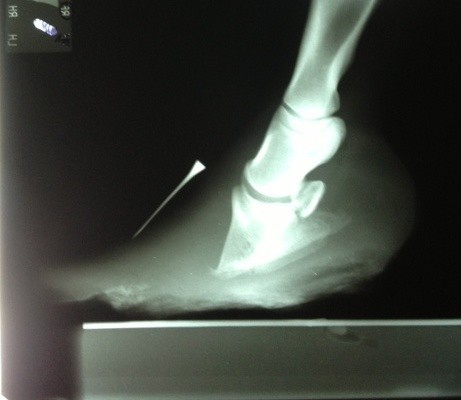
I talked with the owner and he was glad to have me come and work with the veterinarians to help his horse. Here is what he looked like when I arrived:


As a team we worked on the horse for four hours. We gave him many breaks and took our time with each foot in order to do as much corrective trim work as possible that day. We used hoof boots and pads to protect the opposite foot while we were working which made it easier for him to stand.
As I’ve described in other blog entries here in the past, my goals for rehabilitation with these types of horses is based on DDT/E: https://blog.easycareinc.com/blog/hoof-love-not-war/rehabilitation-of-the-insulin-resistant-foundered-horse-dhf-style.
Here are the horse’s feet before and after trim work that day:
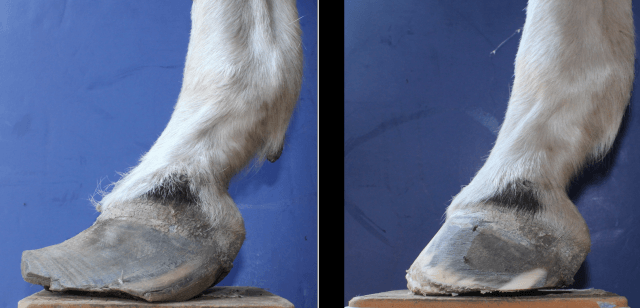
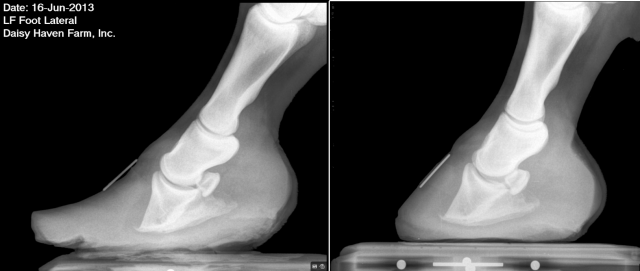
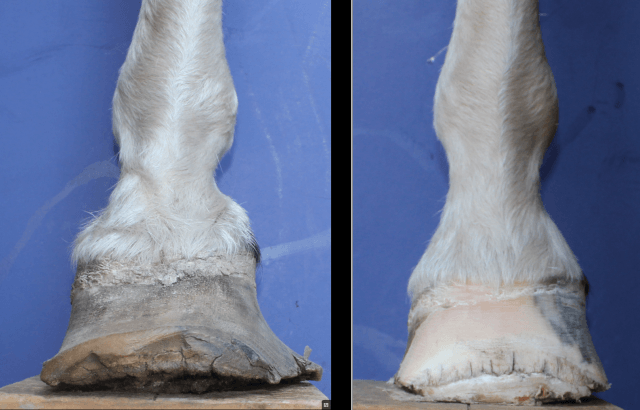
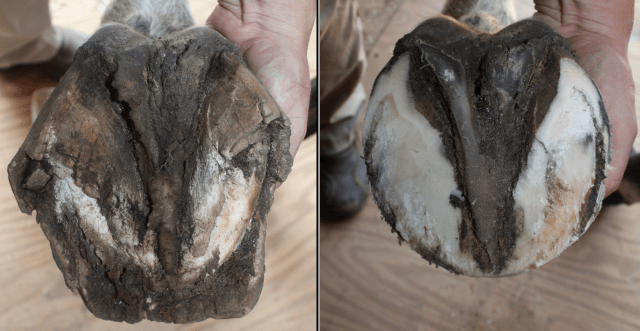
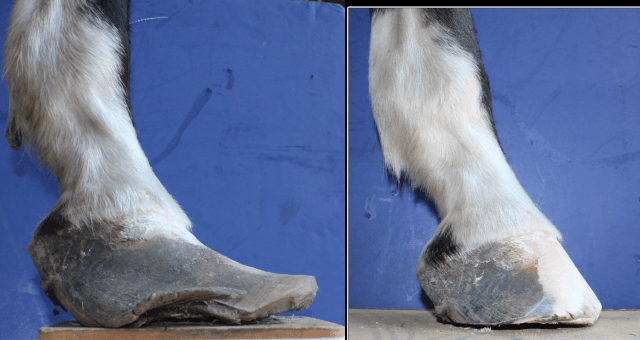
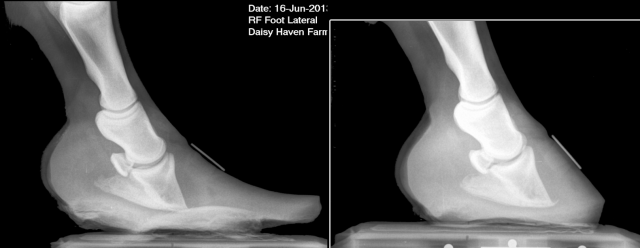
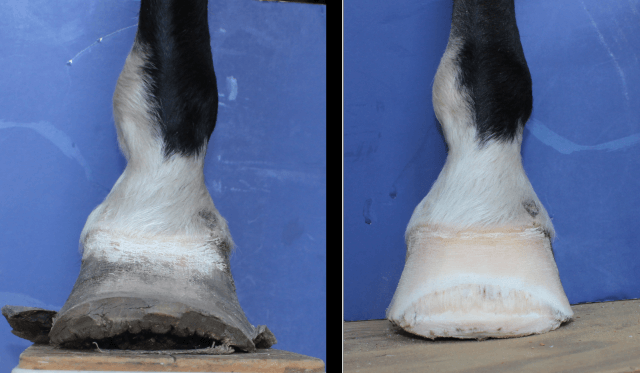
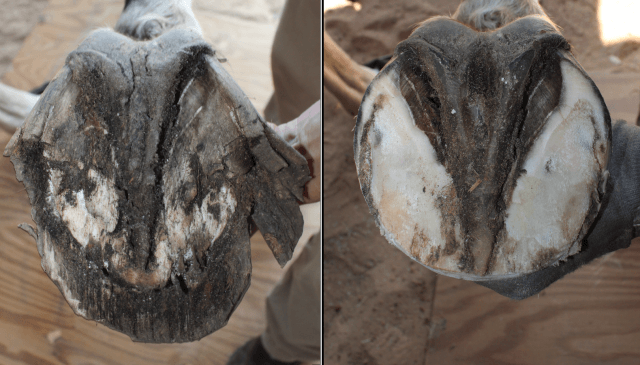
While all of us were together that day: two veterinarians, two farriers, the horse’s caretaker, and my brother, we worked as a TEAM to help this horse get on the path to wellness:
- We applied a rehabilitative trim aimed at correcting the capsular and phalangeal misalignment.
- We discussed diet changes that would help the horse’s uncontrolled metabolic condition.
- We assessed the horse’s environment and recommended management practices to support him through the rehabilitative process.
While this is just the first step in helping this horse get sound and happy, I feel really good about we achieved this first visit. Since then Dr. Theisen and Dr. Gilmette have been back to see the horse. While there, they soaked his feet with Clean Trax and worked on his teeth which needed attention. I look forward to the next visit in a few weeks and continuing our team effort to help this horse get well!
For more information about the work we do at Daisy Haven Farm, Inc please see: www.DaisyHavenFarm.com .




